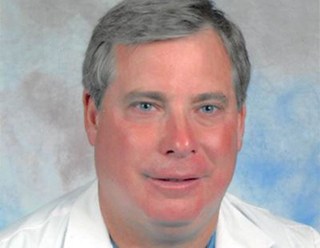


By: Dr. John M. Livingston | Special Medical Policy Adviser
In 1974, I was assigned as a Navy medical student for three months’ active duty at Portsmouth Naval Hospital in Portsmouth, Virginia. This was at the end of the Vietnam War, and I had the privilege of being involved in the care of many wounded and injured sailors, soldiers, and Marines, including 36 returning prisoners of war, several whom became family friends later on in my career. At the time, Portsmouth was able to accommodate 2,000 patients, including those in the convalescent units. The hospital had 2,000 doctors, nurses, technicians and civil servants to take care of those patients. The facility enjoyed a ratio of one provider to one patient.
I was asked to visit Portsmouth several years ago, and I had the opportunity to talk to staff and resident doctors. They have built a new hospital on base, which can accommodate 200 patients, and there are now nearly 4,000 staffers on base. That makes for 20-to-1 ratio.
I asked what they used the old 17-story hospital for, and they said it is now for administrative personnel.
I had been concerned — long before the Affordable Care Act, Medicaid expansion and the formation of Accountable Care Organizations (ACOs) — that the number of administrators in health care was increasing and the number of providers was decreasing, all while the number of patients was increasing.
Economists know that when supply decreases and demand increases, prices will always go up. We need more doctors, nurses, and technicians, not more administrators and government bureaucrats.
But the opposite is happening, primarily because of the ever-increasing number of regulations and the increasing scope of what health care really is supposed to do. Should scarce resources that have alternative uses go toward taking care of sick patients, or toward public health programs and preventive care? Should scarce mental health resources be used to identify and treat schizophrenia in adolescents, or should progressively decreasing resources be used to subsidize rehab services for the fourth time for a 45-year-old drug addict who has relapsed, knowing that the recidivism rate of people in her condition exceeds 90 percent?
Where do we draw the line when allocating resources between health and welfare, education, public safety and transportation? Do we just keep spending more on everything, never holding accountable the organizations and government agencies that traditionally have been tasked with defining and taking care of the public good and commonly allocated resources?
In 2014, I was given the opportunity to be briefed by then-Idaho Department of Health and Welfare Director Richard Armstrong and, his staff, and Dr. Ted Epperly, who helped developed the Idaho Healthcare Innovation Plan (SHIP). I was hopeful until I saw the details of the plan. I could not see how any of the $40 million in federal grant money was going to help those most in need, the ones living at the margins who, through no fault of their own, cannot afford to pay for their health care.
As I again review founding documents via the Idaho Department of Health and Welfare website, I am even more concerned.
It seems to me that the stated goals in the introductory statement — improving outcomes, improving access and the patient experience, and decreasing costs — have little to do with paying for computers and internet platforms that will help implement new payment plans, introduce new data systems to evaluate morbidities and mortalities, and even help private practices buy updates to their electronic medical record systems. Are we helping the 15 percent of the people who don't have insurance via the individual marketplace or their employer, or are we building new infrastructure to accommodate new government regulations? or?
Two days ago, The Wall Street Journal featured an article about many states governments looking to cut health care benefits for their retirees. "States are testing how far they can cut benefits for current and future retirees as a way of coping with existing liabilities and future budget shortfalls,” the article explains.
From 1980 forward, as the accompanying graph shows, the Consumer Price Index has increased 250 percent, while the health care CPI has increased 550 percent. Interestingly, this rise persisted even during four recessions, during which tax revenue to states decreased. Today, the federal contribution to Medicaid is over $650 billion, or almost the same as the states' unfunded retirement health care obligations.
Our legislators have put us in a real pickle. Is it not time to ask for full accountability from all stakeholders in the health care business, including large nonprofit providers, insurance carriers, and the Department of Health and Welfare?
Maybe we should pass a law requiring all nonprofits with over $100 million of transfer payments to undergo an annual independent signed partners audit to be presented to the people's representatives.
Maybe we should insist that state agencies present an annual audit of how our monies are spent. Do we even know how the $40 million for the SHIP program has been spent? Has the state realized its stated goals of improving outcomes, improving access and the patient experience, and decreasing costs? Has there ever been an audit of SHIP?
Idaho residents have the responsibility of asking that our public, private and nonprofit organizations be accountable to us. The reason this has taken so long to happen is that lobbyists—special interests like the Idaho Medical Association, the Idaho Hospital Association, and the Idaho Association of Commerce and Industry, among others—have had more influence over our legislators than patients, citizens and constituents. That’s not to mention the influence of out-of-state organizations that have far more resources to support legislators or ballot initiatives.
As we said eight years ago:
Cost before coverage.
Coverage is not access.
Access is not quality.
It’s time for a change and some accountability on all fronts.

